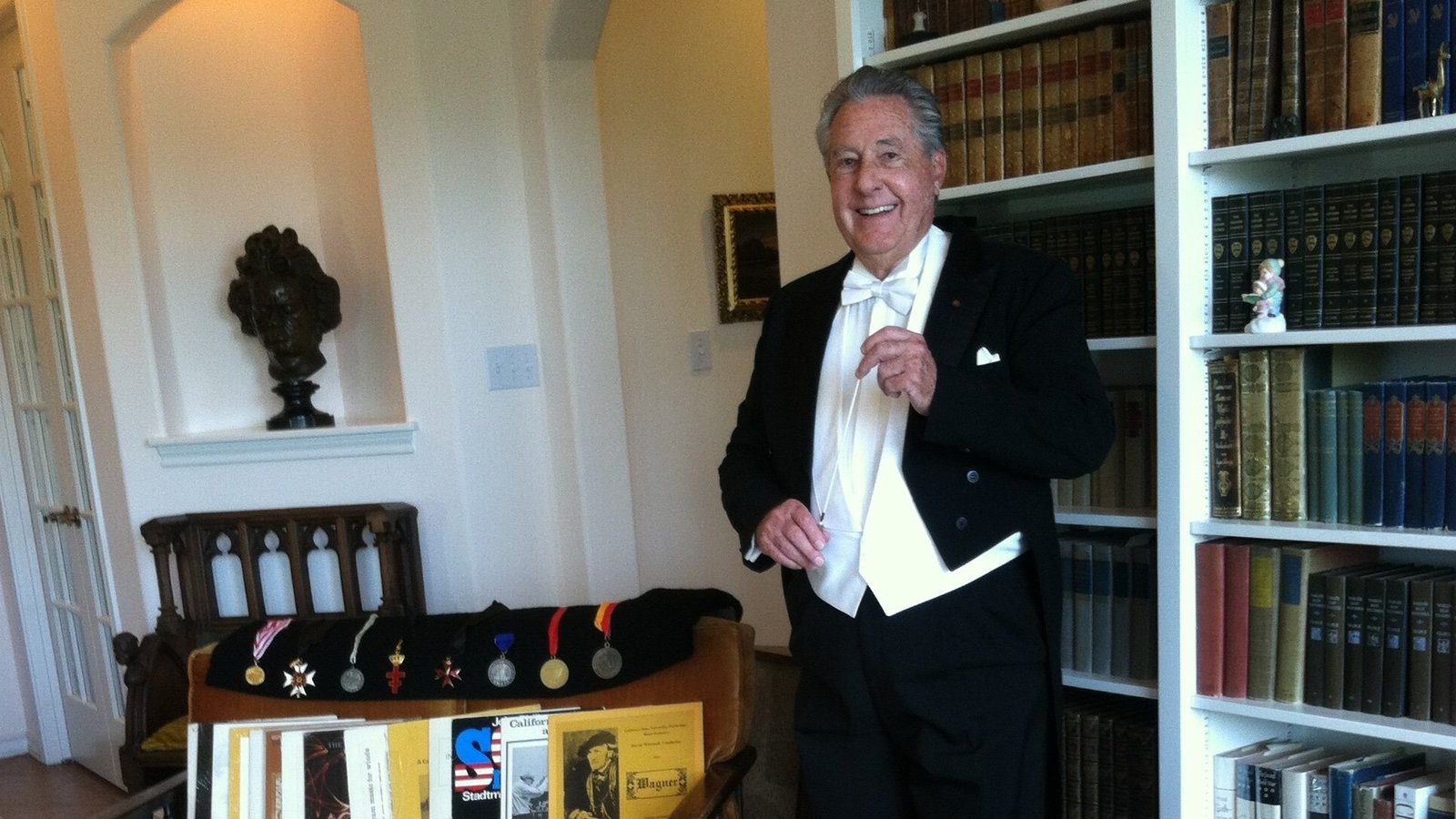Reprinted from “On the Significance of the Title,” The NBA Journal, Vol. LV, Nr. 2, Winter, 2015.
In April 2015, I will be conducting an all-city honor band in San Diego and have programmed Wagner’s beautiful arrangement of the music of von Weber known today as Trauermusik, a work I like to program to demonstrate to other conductors and students the artistic freedom they are allowed with respect to Time. But as I began to think about these young musicians I would be making music with, I began to wonder if the title itself, Trauermusik, would play an undue influence on their thinking. The word trauer, which does not translate well into English, in German means “mourning” or “grief,” emotions which do not represent well the actual music of von Weber which Wagner selected to arrange for wind band. At this point in the opera, Euryanthe is alone in the forest, meditating on life and death but any sense of grief has more to do with having lost her lover, Adolar.
What did Wagner himself call this music? His original autograph score was a two-stave manuscript made from a “conductor’s score” housed in the opera library in Dresden and lost in World War II. This score has no title other than “Adagio.” Similarly, the earliest autograph score which has the designation of wind instruments is called simply, “Adagio.” In Wagner’s own, lengthy account of the history of this occasion and this music he never used the term “Trauermusik,” and only refers to this music once as “this quite appropriately symphonic piece.” I may be mistaken, but I have never seen the term “Trauermusik” in Wagner’s hand on an autograph score nor mentioned in his correspondence during the time period it was composed. It is in the two earliest publications (1860 and 1926) that editors created the title “Trauersinfonie,” a term which the New Grove specifically points out is “not authentic.”
It is true that Wagner gave the first performance of this arrangement as part of the ceremony he organized to honor the return of the remains of Weber from England to Dresden, but that was an occasion which could only happen once. What about later performances? I have decided I am going to change the title. “Adagio” is not a bad choice, but for this performance coming up I think I will list this composition in the program as “The Meditations of Euryanthe,” arranged for band by Wagner, to give the music a more universal meaning.
Similarly, there are some wonderful original band compositions by nineteenth century Italian composers called “Marcia funebre.” But these works nearly always turn out to be contemplative and never seem like functional music and certainly not marches. A band composition such as Ponchielli’s Marcia funebre per Manzoni, might better be called an Elegy (“a pensive or reflective poem”).
This brings us to questions the importance of titles in general. The critical element in performance is the listener—music makes no sense without a listener and the listener is the basis of the philosophy of aesthetics in music. But it is the communication of the music to the listener which matters. A title such as “Northridge Overture” tells the listener nothing. Titles with the form, such as Symphony, Overture, Fugue, mean very little to the modern listener. Even descriptive titles, such as Music for Prague, 1968, mean nothing to the listener without detailed program notes.
My particular concern is titles which give a wrong impression to the listener. I am very unhappy when I see one of Mozart’s wonderful partitas, the name he used, called “Serenades.” In the Classical Period the name “partita” was used as interchangeable with “symphony,” the understanding at the time being only that one was for winds and the other for strings. But “serenade” is a prejudicial term, nearly always used in early literature in circumstances which were demeaning to the musicians. In the case of the Mozart masterpieces for winds the title “serenade” was added by early nineteenth century publishers and reflected a strong and mistaken prejudice at that time that wind music must be either for the out-of-doors or for the dining area, “Tafelmusik.” Let us resolve to never again call the great C minor Partita for winds by Mozart, a work nearly all musicians and critics consider to be among the very best works by Mozart, a “serenade.”
A very similar circumstance surrounds a truly wonderful composition for winds by Beethoven, a work he called simply, “Andante.” A later unidentified hand has written on the margin, “Rondo,” but it was the first publisher, Diabelli, in Vienna, who gave this music the name, “Rondino,” which it still carries today. Again this is somewhat demeaning as it suggests something less than “Rondo.”
There is a very large repertoire of original band music from the Baroque Period written for ensembles called Hautboisten. The composers of these compositions were careful to call them “Overture,” “Concerto [da camera]” or “Sinfonia,” even though the internal forms under these titles vary so greatly that one must conclude that the definition of the forms did not yet enjoy wide agreement. It is clear that the Overture becomes the Divertimento of the Classical Period and the Concerto and Sinfonia become the Parthia. But because the names of these forms are so clearly written, even in those cases where the composer is not named, we should use these titles today even though they lack much meaning for the listener.
In conclusion it remains that it is the music which is important, but we should be careful that the title does not confuse the listener or in some way prejudice them before their hearing of the music.
David Whitwell

